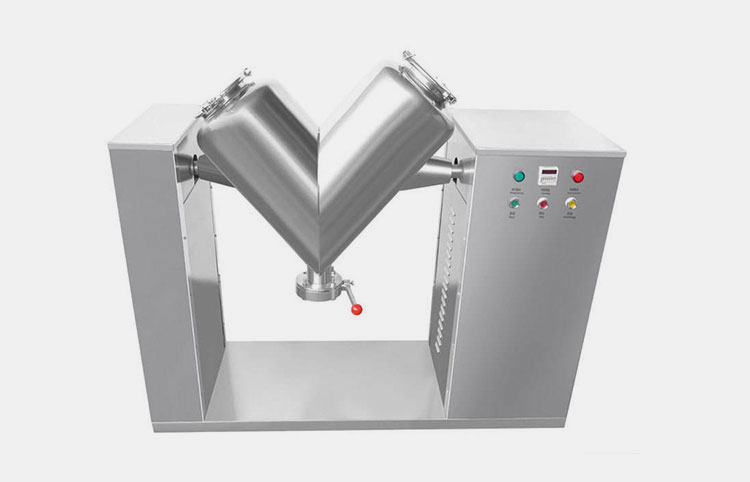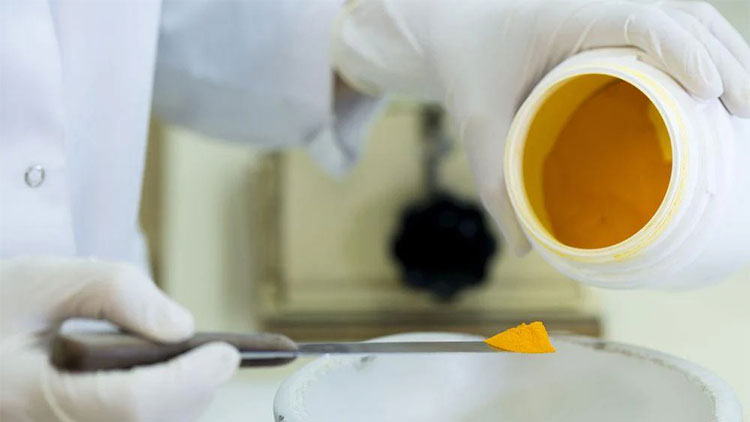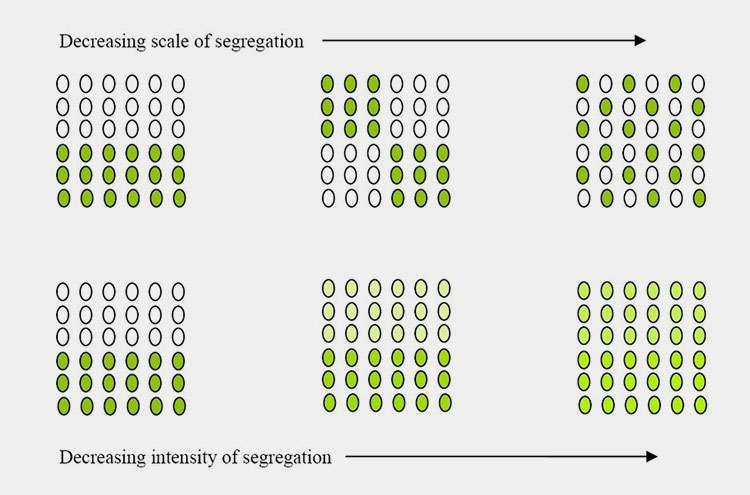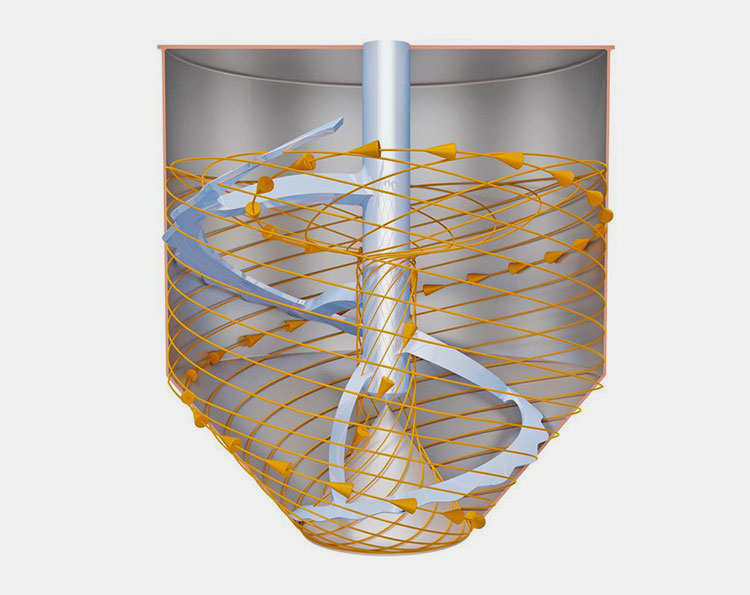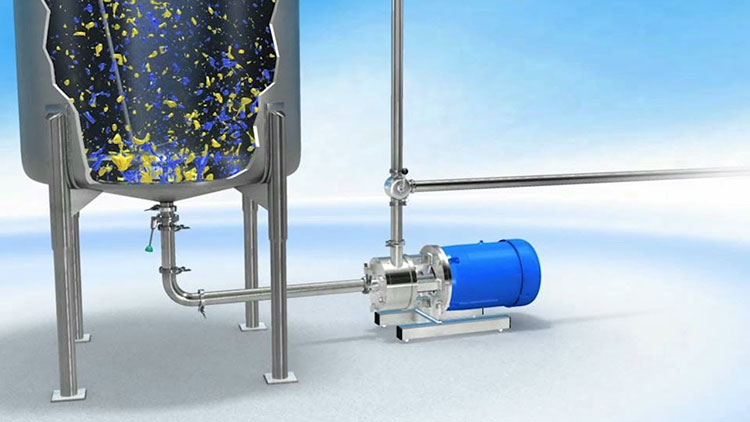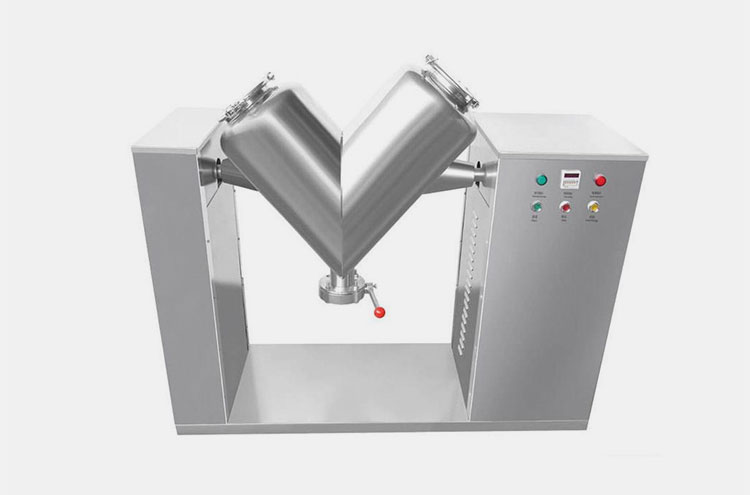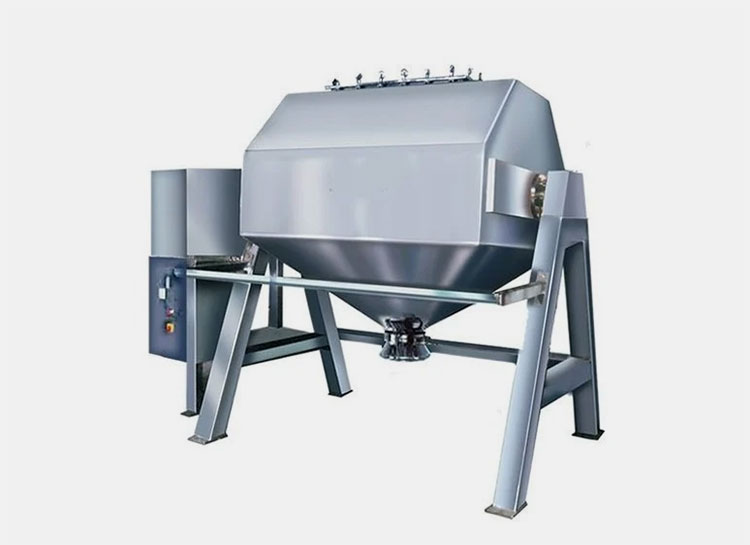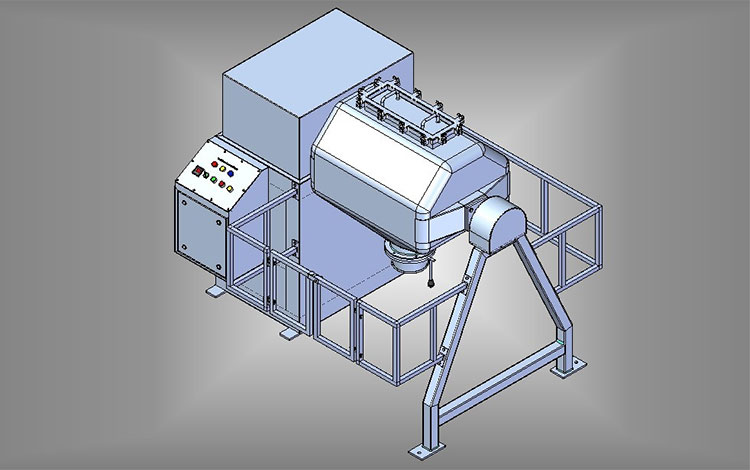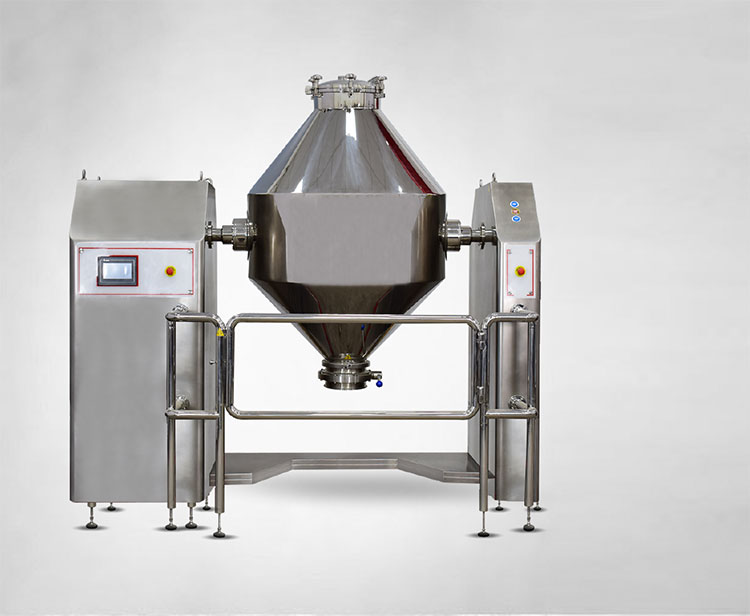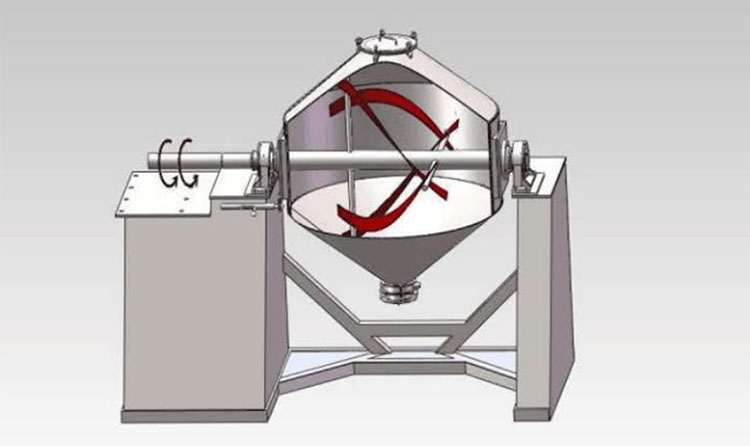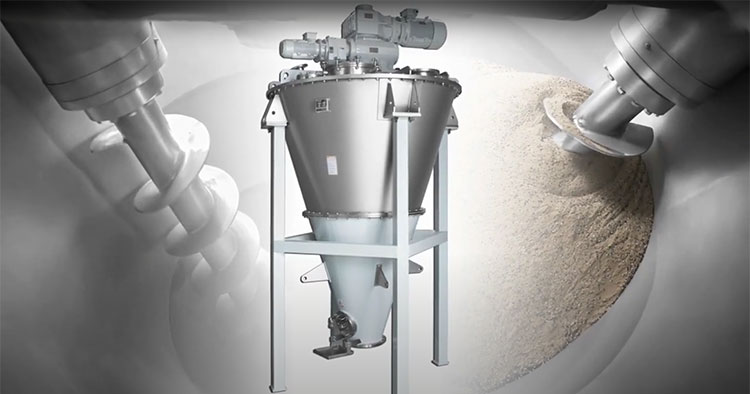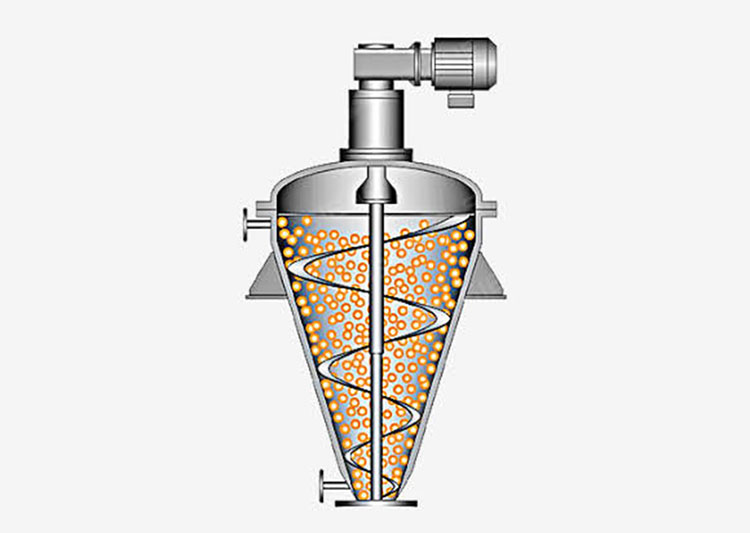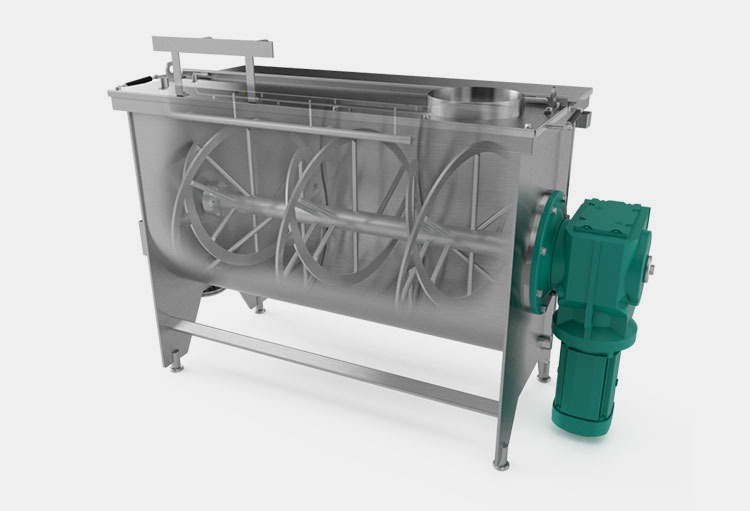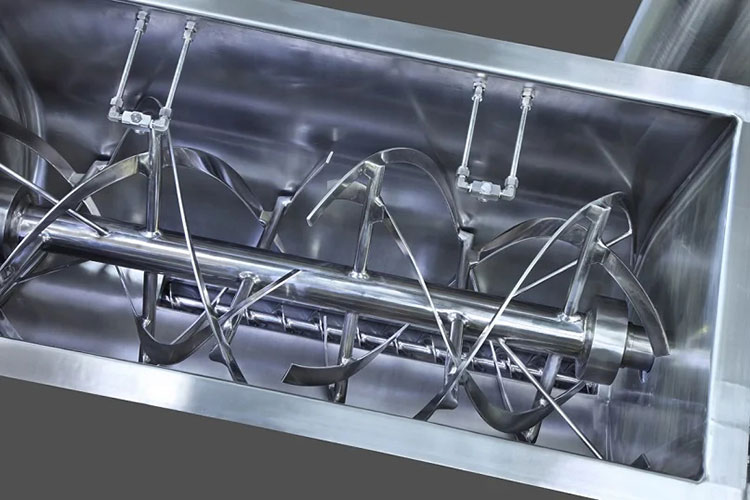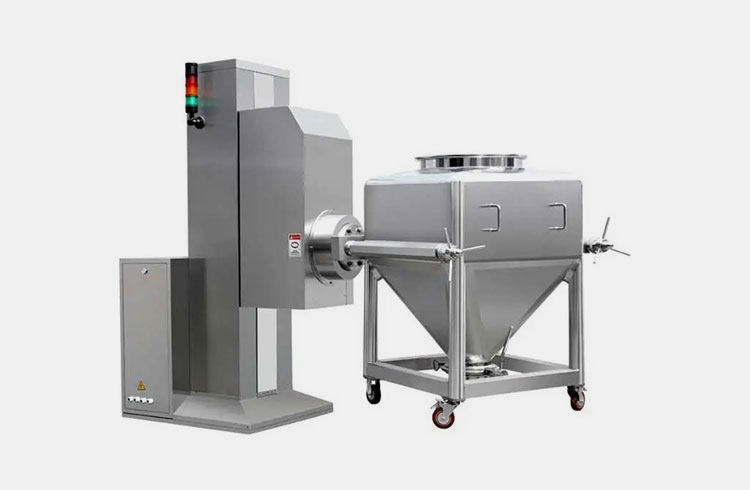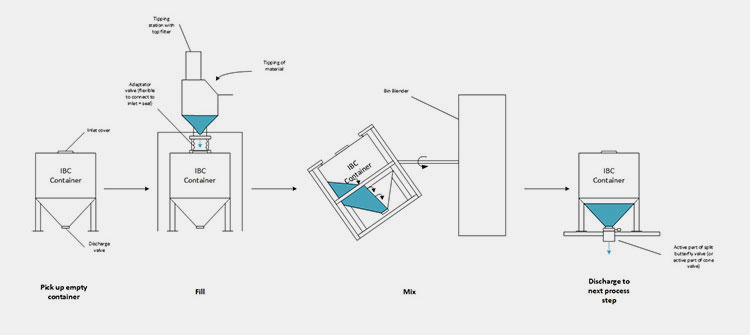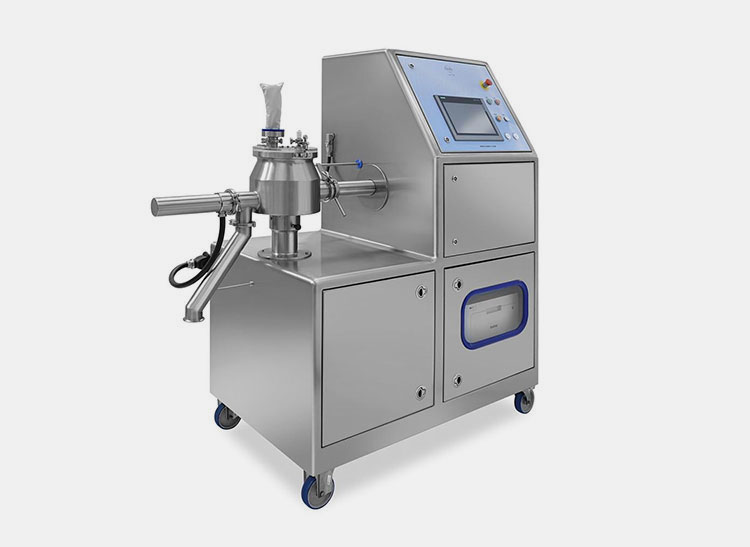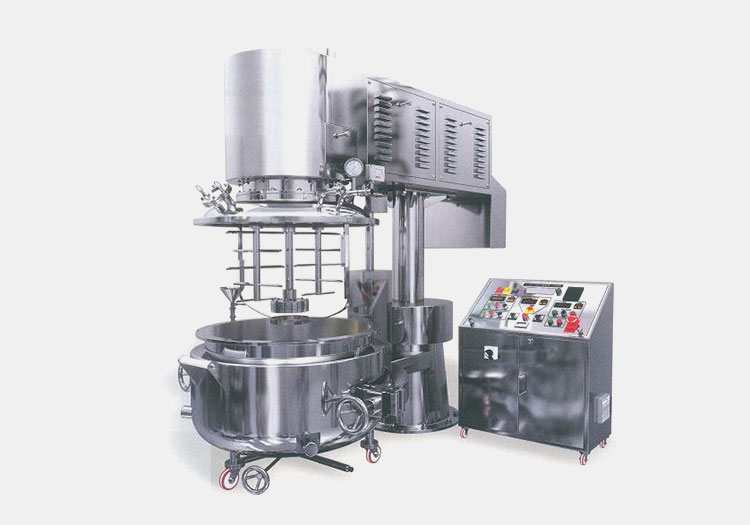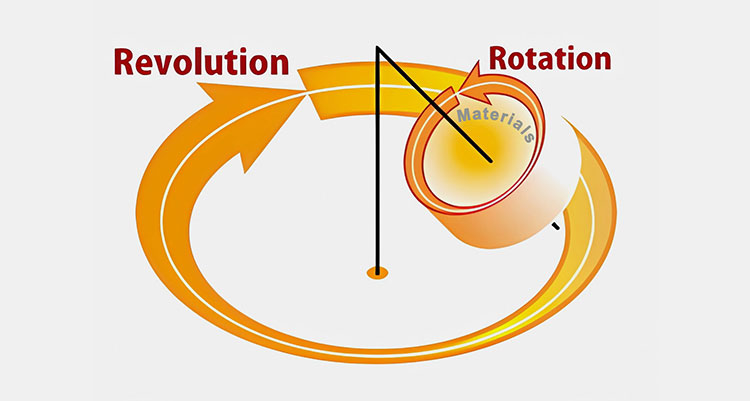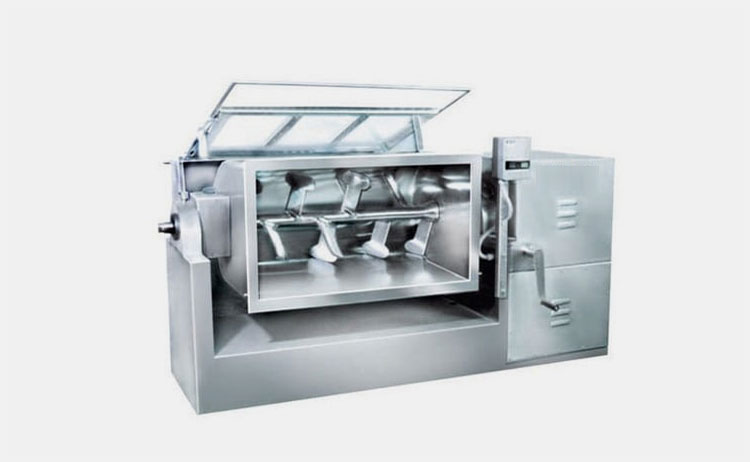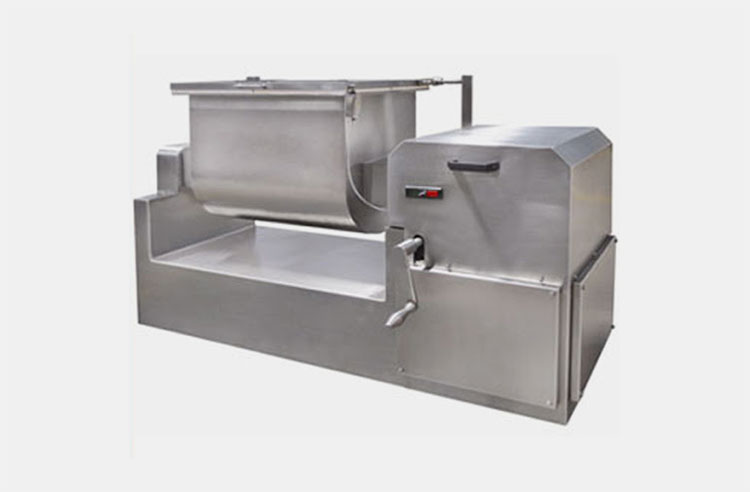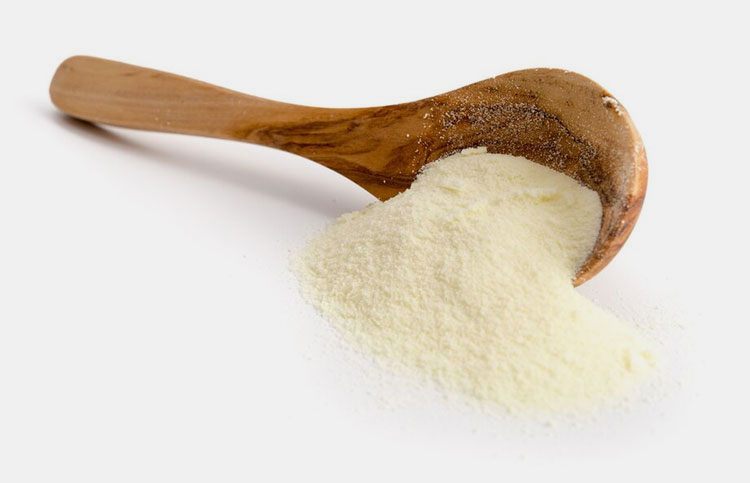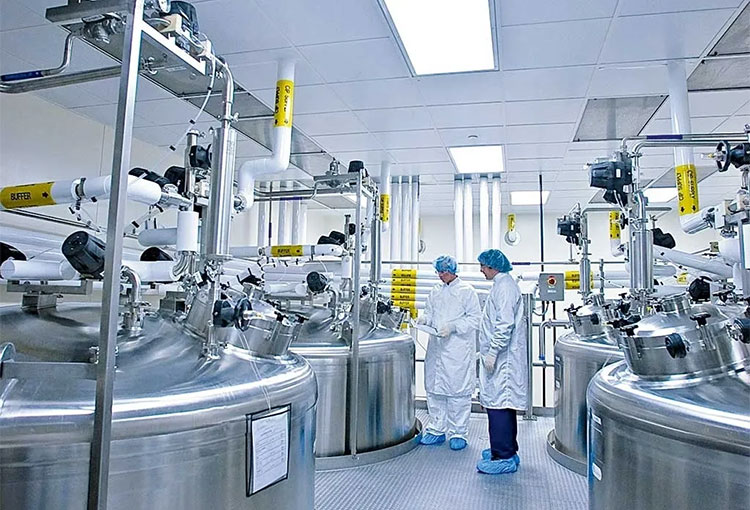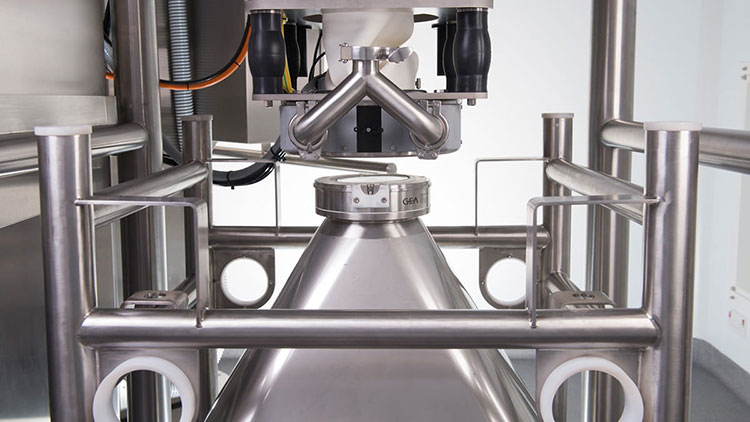9 Common Types of Blenders in Pharma
Is it possible to prepare medicine without a blender? Of course not. In pharma, manufacturing of dosage forms requires mixing and blending to allow composition to be formed and mixed homogeneously. There’s no disputation about how a blender is vitally essential for pharma formulations. How can you get perfect blending? When exploring to know about blenders then I will recommend having a look at this article!
This topic is composed of impressive types of blenders you can implement on dry as well as wet mixing processes.
Let’s read the blog to learn more about 9 common types of blenders in pharma.
1.What Is A Blender In Pharma?
Blender in pharma- Picture Courtesy: Custom Processing
The tool blender in pharma is a frequently used machine for well-defined blending and thorough merging of chemicals or raw materials needed for the production of dosage formulation in pharmaceutical preparations.
There are broad range of blenders in pharma which are selected depending on your requirements and the types of materials to be blended.
What those factors are? You will find later in this article. The blender in pharma has the capability to quickly mix them without harming the quality of the active potential ingredients. It is just like you blend fruits in a blender and get a homogenous solution. Same in this way, a blender in pharma works to bring quality mixture for you.
The relationship of blender in pharma is so obvious and no one can deny its importance in the making of pharma products as it can ensure perfect homogenization, dispersion, and minimization of particle sizes effectively.
2.What Are The Common Blending Technologies Used In Pharma?
Just like various other machines, the blender in pharma design is based on common blending technologies. Because this is not possible to attain all your requirements from a single machine. there are various characteristics of powders or materials, therefore, different machines can be implemented in specific cases.
The blender in pharma in these cases is categorized into the three basic technologies.
- Diffusion
- Convection
- Shearing
Diffusion
Diffusive blending- Picture Courtesy: Researchgate
This might be not a new term for you. You must have heard about the process of diffusion before, isn’t it? This is a simple process that uses tumble movement of blending material and by the rotation of the tumbler, the process can be efficiently continued. This method is also known as tumbling mechanism.
This is a smooth technique that is mainly based on the tumbling and gravitational force; hence the particles get random movement to minimize the particle sizes and get the greatest media for homogenization.
It causes homogenous of random particles therefore you can term diffusion as micro-blending or micro-mixing.
Convection
Convection blending
First, you should understand the meaning of convection, it is the movement of something with the help of any physical support. In the case of blending, impellers or movement of the blades cause the transfer of the mass from one side to another.
In this way, you can obtain a dispersed mixing of ingredients to be mixed. In a nutshell, it offers extensive blending and occupies a huge position in the various industrial platforms for the manufacturing of the products.
This is the reason; it is known as macro-blending as it blends the substances moving from one place to another.
Shearing
Shear blending
It is a formation of stress with the help of impellers or paddles that imparts the greater dispersion of the raw ingredients.
Compared to the convention, it is a high-speed blending procedure and requires high-speed impellers to create a shear force. This ultimately ensures proper blending with excellent impacts of the materials that make the process much easier.
3.What Are 9 Common Types of Blenders in Pharma?
The blending process is a phenomenal method used in pharma for the manufacturing of various items. To enhance the quality of the product proper blending is paramount. It improves the homogeneity and potency of the actives in pharmaceutical items.
Belonging to Pharma production, it is your responsibility to opt for the right machine to bring the possibility of producing adequate output. There are 9 common types of blenders used in Pharma. Have a look!
V Blender
Allpack VH-50 V type Blender
The smooth and sleek construction of the V blender is the first choice of every customer associated with pharma practices. The design of the machine is presented with the joining of two hollow cylinders that create a V-shaped blender which is why it is known as a V blender.
This machine has subtle bends, therefore no chance for products to be residue inside or cause cross-contamination.
The machine construction is made from stainless steel 304 which is considered the safest when dealing with pharma or food-related substances.
The machine is available in various types such as laboratory, medium shape, and large sizes.
Working Principle
Working of V blender- Picture Courtesy: Pharmacy Scope
The V blender is equipped with an intensifier bar and a V-shaped cylinder that allows a tumbling force to be created during the blending process and improves the homogenous blending of the substances by lifting and cascading the powders with other materials.
The entire process is taken within the chamber and the output is extremely finest mixture with a uniform distribution of the components.
Octagonal Blender
Octagonal blender
An octagonal blender is designed with eight flat corners that form a chamber for the blending of powders.
The two-third filling volume ensures an excellent distribution of the blending materials.
The machine moves slowly as compared to other blending equipment and that is the major significance of the octagonal blender because it gives a subtle smooth mixing medium for a complete distribution of ingredients.
Working Principle
Working of octagonal blender
The chamber of the octagonal blender is supported by a middle axis which ensures a stable movement of the machine. The system itself moves non-linearly and gives maximum flow to inside materials and mixes effectively.
The thorough movement of the machine ensures non-stagnancy of the powder inside the dead zone and reduces the chances of accumulating debris.
Double Cone Blender
Double Cone Blender
The double-cone blender is designed with the welding of two cones at its central base. If you see the machine, it will look like two cones, that are oppositely joined together.
Its smooth and sleek interior is coated with food-grade materials just to regulate the friction and avoid sticking of the materials.
The machine is ideal for dealing with materials with different capacities. For example, the general volume ranges from 160 to 4200 Liters where 65% of the filling capacity is considered useful for blending.
When you have to deal with sensitive materials blending, we would suggest going for a double-cone blender.
The machine is closed and compact and prevents dust formation as well as no chance to break then. Just 5 to 20 minutes is sufficient to get desirable mixing.
Working principle
Working of double cone blender
As we talked above, the machine is composed of two cones like a cylinder and fixed to an axis for the rotation, when you load material inside the chamber via a loading aperture. It blends the material via rotation of the cylinder around the axis of the cone with the help of a motor driver.
The machine ensures complete homogenization which depends upon the number of rotations (rpm).
The equipment is hermetically closed to prevent the leakage of the materials and it is because of the butterfly valve that ensures firm closing of the unit.
Vertical Blender
Vertical blender
This is the simple blender type used in pharma which is designed with a vertical dimension. Here the machine is facilitated with an agitator or blending shaft which is affixed centrally and allows the materials to blend when it moves gently.
This is an excellent unit for heat-sensitive, low-impact blending, and abrasive materials. As the machine is compact in structure, it acquires a low floor space.
In pharma, the vertical blenders offer you gentle agitation which is why it is mainly used for capsules tablets, and related product preparations.
Working Principle
Working of vertical blender
The working of a vertical blender is also very easy and simple where a movement of the baffle around the fix axis creates a fluidization bed of the blending materials and assists a complete mixing of the powders and gives you a homogenous blending.
Ribbon Blender
Ribbon blender- Picture courtesy: GPI De Gouwe
Before starting with ribbon blender, you should know the exact meaning of ribbon. Actually, a ribbon is a flat thin, and narrow strip.
In the case of the ribbon blender, the chamber of this unit is facilitated with helical ribbons that ensure a homogenized blending of the material you incorporated inside the chamber.
Frankly speaking, this ribbon blender is one that is popular and frequently used in pharma, for making solid dosage forms, semi-solid dosage forms, are related products.
There are various sizes of ribbon blenders that you can find in the market which is mainly depending on your requirement. The purpose of helical ribbons is to move the materials inward and outward without breaking them and offering you back-and-forth motion that creates a convective mixing.
Working principle
Working of Ribbon Blender- Picture Courtesy: ROSS
You can add the mixing material into the ribbon blender while the mixing occurs when the ribbons move across the fixed axis helping the product to evenly homogenize.
Due to convective mixing, there is short and rapid results can be formed when you use the ribbon blender which hardly takes up to 20 minutes. It mainly depends upon the type of material to be mixed and the estimation of the mixing,
Once the materials are blended completely, they are discharged with the help of a centrally located exit port which releases the material once you open it.
IBC Bin Blender
AIPAK IBC Bin Blender
An intermediate bulk container or IBC bin blender is a simple and effective method of blending pharmaceutical materials.
The blending container is designed in a bin that produces tumbling effects to the materials that are packed inside the chamber, such as granules, powders, or any pharmaceutical materials that are required for the manufacturing of products.
Therefore, the materials that are blended are entirely safe from external exposure as well as keep your environment safe by preventing the blowing of powders or any material outside.
So it is not only a friendly machine for your product but also for your environment.
When it comes to knowing about the property of the machine, it allows a gentle mixing and makes your product in a way that it does not get segregated once the mixing is stopped.
The IBC bin blender can be able to deal the products that range from 5 Liters to 2000 Liters or can manage a capacity of 14,000 kilograms
Working principle
IBC bin blender working principle – Picture Courtesy: Powder process.net
The IBC bin blender works when a container blends the material present inside it with the help of internal impellers which are already designed inside the chambers. It allows the mixing of materials and ensures that the entire work process is uniformly done.
The benefits of an IBC bin blender are that it can be integrated with other mixing containers, and it can reduce the chances of transferring the mixed or the blended material again and again.
High Shear Blender
High shear blender- Picture Courtesy: COS.mec
This is a multi-functional machine that offers advanced properties to the mixing material. By its name, you can predict that the blender produces high shear forces for the mixing of materials, and it can be created with the help of a vacuum and agitator.
Working Principle
High shear blender working- Picture Courtesy: Silverson
Once you load the material, high shear forces are produced inside the machine with the help of the rotor and stator.
It allows your particles to reduce in size and form a homogenized blend.,
Well, this blender is mainly used when you are subjected to make a viscous or an emulsifying product. Because it produces high shear forces that not only reduce the size of the particles but help in the proper homogenization of a uniform distribution of entire ingredients used in the solution. Once the homogenization process is completed you can release the product by its exit port.
Planetary Blender
Planetary blender- Picture Courtesy: Passion Auto Engineer
A planetary blender is a hollow chamber that is facilitated with several agitators that look like the planet moves around a fixed axis.
This blender design is very simple and mainly suitable when it comes to blending substances with pasty consistency or having high viscosity. The presence of multiple agitators helps to reduce the size as well as give a thorough blending of the entire solution up to your requirement.
So, the machine promises to give you the quality blend that you look for in your product.
Working principle
Working principle of planetary blender- Picture Courtesy: intertronic
The homogenizing ingredients to be blended are introduced into the bowl of the blender and allow the planetary motion of the agitators that follows the three-dimensional movements to ensure an effective blending procedure. Therefore, the materials with high density or viscosity are excellently blended resulting in a perfect distribution of added ingredients.
Mass Blender
Mass blender
When preparing pharmaceutical products the precision and uniformity very important. A mass blender is opted as it has critical role in blending of dry and wet granulation needed for capsules , tablets, and granules formation. The machine is constructed with food materials with anti corrosive properties ensuring vortex like mixing with hygiene and safety.
Working Principle
Working of mass blender- Picture Courtesy: DNK
It has a huge tub with various blending agitators allowing convective motion of ingredients when they move. The continuous motion results in creating a vortex that uniformly distribute the mixing ingredients and gives you the finest results.The introduction and release of blended material take place by the entrance and butterfly valves that are tightly closed during the process and can be loosened to release the blended materials once the process is completed.
4.How To Select Specific Equipment Among Common Types of Blenders In Pharma?
When purchasing a blender in pharma you should know the following points to get the right machine. For example,
Estimation of Your Blending Capacity
Bulk density- Picture Courtesy: BUXtrade
This is very important to know the estimation of ingredients to be mixed in a blender. Many of you might be considering the measurement of blended ingredients in kilograms but in actual practice, the blending material capacity estimation should be done in Liters.
For example:
Volume of blender (L) x bulk density of ingredients
Blender must be Efficient
Blenders in pharma
Your machine and the production are closely related to one another. If you have a high production requirement, your machine should be compatible with it. Therefore, whenever choosing a machine, you should look for the right manufacturing companies to supply you with the equipment that goes exactly perfect with your needs.
- You must estimate the production cycle each hour.
- The characteristics of mixing ingredients.
- The overall cost of the production by the machine.
Remember, you are right selection is the one that makes your one lifetime investment.
Quality compliance
International quality certifications- Picture Courtesy: EESS Calibration
When it comes to manufacturing pharma products, you can’t ignore the quality standards. The equipment must be designed in a way it should be compliant with such important certifications required for products and workers' safety. For example, FDA, ISO, CE, and others.
Is your equipment durable?
Blender durability- Picture Courtesy: GEA
Buying and installing a machine is not a one-day plan. But you seek to do this task that gives you greater durability.
So, you should be confident about your machinery prior to setting up them in pharma.
For that extensive planning must be decided to gain the best equipment.
The workout points are to get in touch good manufacturer, knowing your reputation, past track record, and the expertise of your supplier.
Conclusion
This is not wrong to say that a blender in pharma is a fundamental tool for bringing quality medications. In this article, we have discussed the top 9 common types of blenders in pharma that are significantly accepted and incorporated into the pharma setups for manufacturing processes. What’s yours? For that, we would be suggesting to contact us? Why Allpack? We are experts in supplying a broad range of blender series to pharma and related companies with an excellent reputation. You shouldn’t be stressed when in touch with us! We are here to initiate a good guidance journey till the final installation and beyond. Come on, let’s discuss your plan with us now!
Don't forget to share this post!
CONTACT US
Tell us your raw material and project budget to get quotations within 24 hours.
WhatsApp Us: +86 181 7101 8586
The Buyer's Guide
